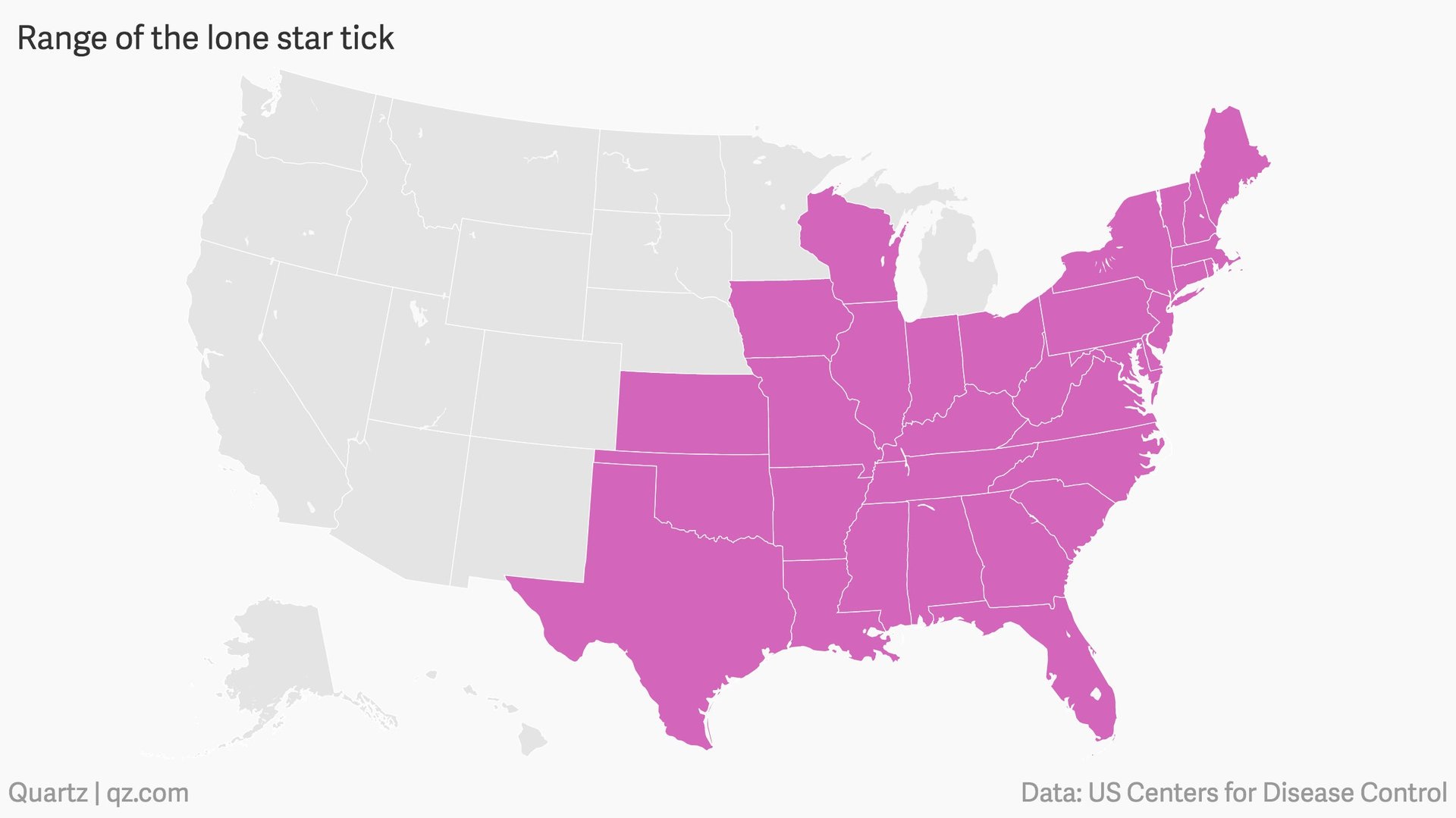The areas of the US where ticks are spreading red-meat allergies
A rare allergy to red meat is becoming more common, thanks to the spread of Ambylomma americanum, conventionally known as the lone star tick.


A rare allergy to red meat is becoming more common, thanks to the spread of Ambylomma americanum, conventionally known as the lone star tick.
Scott Commins, an allergist at the University of North Carolina-Chapel Hill, was one of the first doctors to recognize that patients coming in with allergic reactions to red meat had also recently been bitten by a lone star tick. That was roughly a decade ago. In 2017, he told USA Today that UNC had treated a total of 537 cases of tick-related meat allergies to date at that point. Now, Commins told NPR, “we’re confident the number is over 5,000 [cases]…in the US alone.”
Although the US Centers for Disease Control and Prevention isn’t tracking the number of new tick-bite-related red-meat allergies, in May of this year the organization reported that the number of cases of vector-borne diseases had tripled between 2004 and 2016.
That’s largely due to climate change, which has enabled disease-carrying insects like mosquitos and arachnids like ticks to make their homes in expanding areas of the US. For example, the lone star tick used to live in the warm south-eastern region of the mainland US, but its habitat appears to be spreading, thanks to rising temperatures across the US. The CDC estimates that the lone star tick’s range now includes parts of all the states in the map above.
How a tick bite can cause a red-meat allergy
Scientists aren’t sure how these tick bites cause an allergy to red meat, but they have a theory. A number of mammals—but, crucially, not humans—naturally make a sugar called alpha gal. Scientists suspect that in some cases, a lone star tick will pick up alpha gal from one meal and then pass it along to an unsuspecting hiker as they go to feed again.
For whatever reason, our bodies interpret alpha gal as a potential threat. Although the tick bite may not cause any initial symptoms, it triggers the immune system to make antibodies for the alpha gal sugar as if it were a pathogen. The next time that hiker goes in for a cheeseburger, lamb leg, or pork chop—all of which also contain alpha gal—her immune system springs into action. The severity of the allergic reaction varies from person to person, and usually include hives and gastro-intestinal distress about six hours later. Scientists still don’t know much about the permanence of the allergy, but have observed that some patients also develop a new, similar allergic reaction to dairy.
In any case, the best thing to do is to avoid getting bit in the first place by using bug spray and and wearing long-sleeved clothing when walking through woods, shrubbery, or tall grasses. Lone star ticks have also been known to spread Rocky Mountain fever and a number of other bacterial infections that cause rashes and fevers.